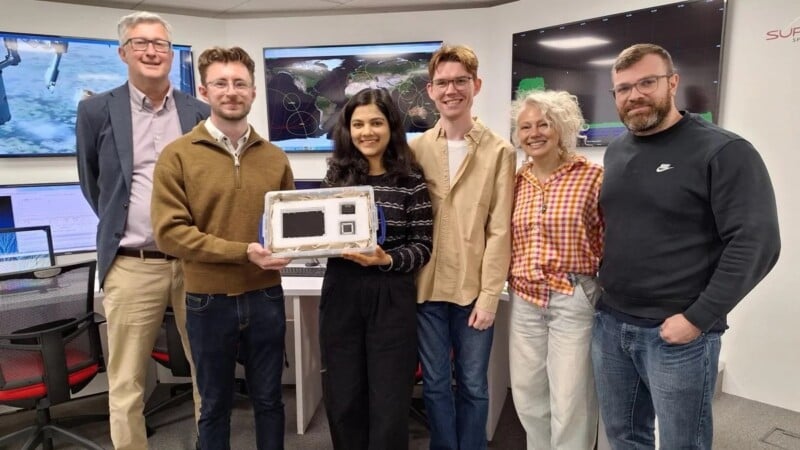Ultra-Black Paint May Solve Satellite Pollution Crisis
A new ultra-black paint may offer a practical solution to the growing problem of light pollution caused by satellites.
Low Earth orbit mega-constellations, such as the ones deployed by SpaceX, pose a threat to humanity’s view of the Universe. However, the University of Surrey has developed a paint called Vantablack 310, which has the potential to significantly reduce satellite brightness and minimize disruption to ground-based astronomical research, including that of astrophotographers.
Since the launch of the first Starlink satellites in 2019, the increase in reflective spacecraft has drawn concern from the scientific community. Thousands of satellites now orbit close to Earth, often outshining stars and interfering with telescope imaging. With more than 8,000 satellites currently in orbit and projections estimating up to 60,000 by 2030, the problem is only expected to intensify.
Astronomers are particularly concerned about the impact on new observatories like the Vera Rubin Observatory, set to begin operations later this month. The $1.9 billion telescope could see up to 40% of its images affected by satellite streaks, reducing the quality and scientific return of its observations.
“Over the past five years, humankind has launched more satellites into space than it has done over the previous 60 years,” Noelia Noël, an astrophysicist at the University of Surrey, tells Space.com. “It’s a real problem for astronomy, especially for telescopes like Vera Rubin, which had to significantly change its observing strategy to avoid satellite clusters. So, I wanted to do something about it.”

Noël partnered with Surrey NanoSystems to address this issue. The collaboration has led to the development of Vantablack 310, which reflects only about two percent of incoming light, compared to five percent for other commercial coatings. The material is based on carbon black combined with proprietary binders to ensure durability in the harsh conditions of space.
Unlike earlier ultra-black coatings developed by the company, which used delicate carbon nanotubes and were challenging to apply, Vantablack 310 can be easily handled and applied in satellite manufacturing facilities.
The technology will be tested in orbit aboard Jovian 1, a student-built CubeSat scheduled for launch in 2026 as part of the Joint Universities Programme for In-Orbit Training, Education and Research (JUPITER). The satellite will carry payloads from multiple UK institutions, and one of its solar panel surfaces will be coated with Vantablack 310. Ground-based observations will track changes in brightness to assess the paint’s performance.
“We know from some simulations that we have done that our coating should make satellites invisible to the naked eye,” says Kieran Clifford from Surrey NanoSystems. “That’s about magnitude seven in terms of brightness while Starlink satellites range from magnitude three to magnitude five.”
Magnitude is a logarithmic measure of luminosity; lower numbers indicate brighter objects. A satellite with a magnitude of seven would be difficult to see without a telescope, whereas current satellites can outshine many stars.
“I don’t want to be too optimistic, but I hope that with this new solution, we might be able to inspire some policy changes,” adds Noël. “Satellites are an amazing technology, but we also want to make sure that the sky remains accessible to everyone.”
Image credits: Header photo licensed via Depositphotos.